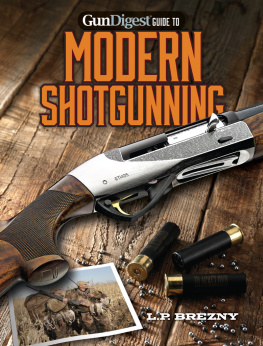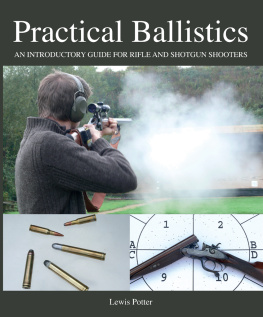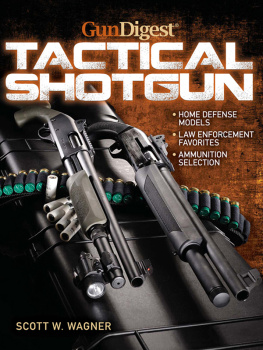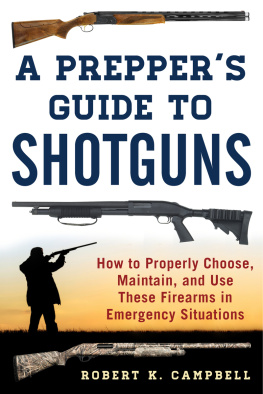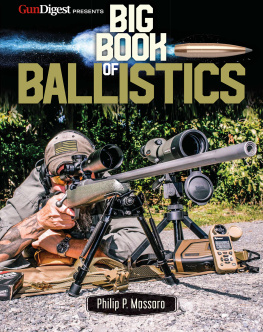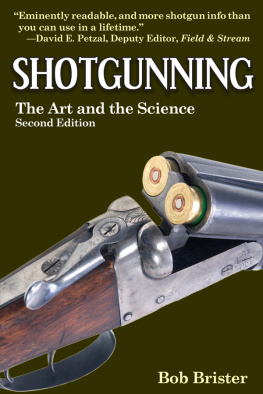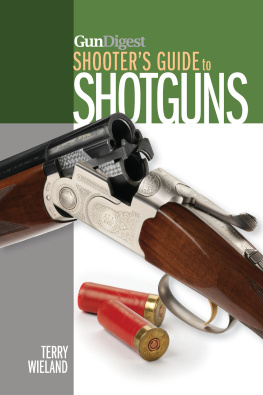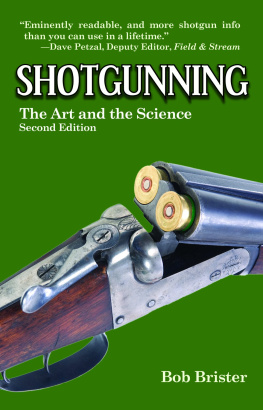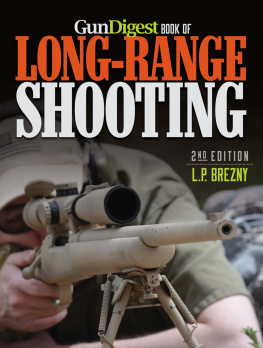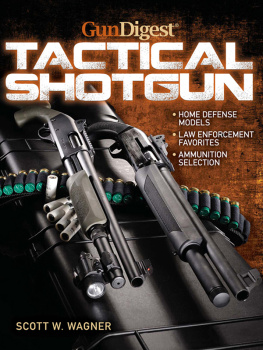
MODERN
SHOTGUNNING

L.P. BREZNY
INTRODUCTION
The modern shotgun is a small wonder, when observed from mine, a ballisticians point of view. While being random in terms of projectile control (or lack of it), the shotguns functioning system retains some very predictable elements that make it one of the very best and most flexible gunning tools in use today by hunters and target shooters, as well as in military and law enforcement applications.
How flexible is the shotgun, how lethal? In its time, the shotgun has often been used by war-time armies, as was the case in Germany, during WWII, for instance; those who knew they were to come up against them on the battlefield wanted them declared illegal for combat! As law enforcement tools, there are no better weapons to be considered, when a team or even a single officer is confronted with multiple targets in urban settings and at close range; merely the sound of a pump guns action in the dead of night, slamming home a chambered round, strikes fear into the heart of any intruder with at least half a brain in working order. Of course, for the sportsman, when the targets are rising game birds, descending waterfowl, or incoming deer or coyotes, the shotgun can also answer the call, providing the correct ammunition is applied for such purposes in the field.
There was once a question asked of Alaskan bush pilots, regarding exactly what gun they would consider as a survival tool to be carried in their aircraft, if only a single choice could be had. The answer was, overwhelmingly, a 12-gauge shotgun. Why? Because the shotgun is flexible in terms of bringing down everything from bears to rabbits, as well as it is dependable, in that its action, even in a repeating pump gun, always seems to work. Haul along a mixed-fruit salad of slugs, buckshot, or fine birdshot and youre in business, when it comes time to keeping the Dutch oven full of meat. Indeed, when one of the survival-themed television shows aired awhile back and the participants were issued guns, the single gun that worked out the best, in terms of just keeping these people supplied with some form of protein, was a simple .410-bore shotgun. (At the time, I wondered why a .410, but knowing a few television writer types and also knowing their understanding of the real gun world, that whole issue becomes still another story. Im sure you can imagine as well as I can.)

All this brings me to purpose to this book, but first let me clarify what it wont be about. What this book will not be about is a reconstruction of the shotguns history. Nor will it be a basic evaluation of shotguns as the tools of the upland, waterfowl hunter, or clay bird shooter. While elements regarding upland, waterfowl, and other related target shooting subjects will indeed surface within the text, the primary purpose of this material is really to give the reader some insight to the massively extensive and flexible adaptations associated with a modern scattergun.
The world of shotguns, and mainly the study of smoothbore ballistics, started for me almost 50 years ago, back in the heart of the Midwestern United States. In those days, hunting land access was easy, game was plentiful, and lead shot ruled the land. For the roughly first 15 years or so I hunted and shot there, I never chambered a single factory load in my shotgun that I could remember; you dont know smoothbore ammunition or scatterguns until you have built your own ammunition from scratch. Thats the start of a full-blown learning curve and, in my case, the start of a drive toward a long and eventful career of both making shotguns work better and pushing the loads that supply them fly harder and further then any previous time in American smoothbore history.
Being at the very onset of the non-toxic revolution, and with a decade already behind me in high-performance lead shot load research, I was right in the drivers seat, when my writing and field work began to turn to reporting on load performance. Tacking on my research time involving the development of totally new types of specialized non-toxic ammunition for long-range waterfowl and varmint applications, and you could say that I was positioned at a point in firearms history that proved to establish my long and eventful travel down the road of smoothbore ballistics learning and advancement.
During the past 35 years, I have been involved in the testing, development, and field application of new shotshell load designs; believe me when I tell you that ordnance development, as in highly upgraded ammunition, has pressed forward at an almost unbelievable pace. Ive also regularly participated in actual, real-time testing of completely new shotguns being released for public sale by the firearms makers. So, much of the writing in this book will expose you to those real-world field-testing examples, because thats whats truly pushing the modern shotgun technology today. Related shooting gear associated with the modern smoothbore firearm will also be included, as required.
Over the course of this book, Ive made sure you will be introduced to hard data ballistics that will show you how different load designs function and what you can expect of them when they meet their target, doing away with the minimal (and not very useful at that) shotshell box-top information. Why? That box-top info is produced by measurement systems at the shotguns muzzleand nothing to my knowledge ever gets shot at, in terms of published ballistics, quite that close to the muzzle of a shotgun. You have distance between the muzzle and whatever it is youre aiming at, and its that distance, in a few to many dozens of yards, that matters far more than whats going on directly in front of the bead.
If there is an element of subject elimination within the text here, it is in the areas of clay target shooting and studies in lead shot ballistics. I admit that clay shooting is not my area of expertise, but thats not the reason you wont find much information on it. The reason you wont find much info on those two subjects is that, for the most part, lead shot is, without question, on the way out! That includes lead shot as we currently see it being used for clay target games and field sport shooting. As for the sporting guns themselves, whats new with thembackboring, extended chokes, stock weights, barrel weights, adjustable stocks, and the likeare tried and true features and, so, arent really new at all.
Finally, its of particular note that specialized shotguns for the military, sporting games (3-Gun, for instance), and police have evolved to enter the realm of mainstream field application. The use of silencers (noise suppressors) on shotguns, for instance, is very new. This includes my own design developments in this area, which have centered on the current-production .724 Orion 12-gauge silencer system, as well as the established Metro Gun System, both of which are designed to produce very quiet shotgun shooting. The information you will obtain here covering shotgun silencers will be some of the first on this subjectand accurate to the letter. Overall, and taking interesting developments such as these and others and viewing them as a reflection of what truly defines todays

